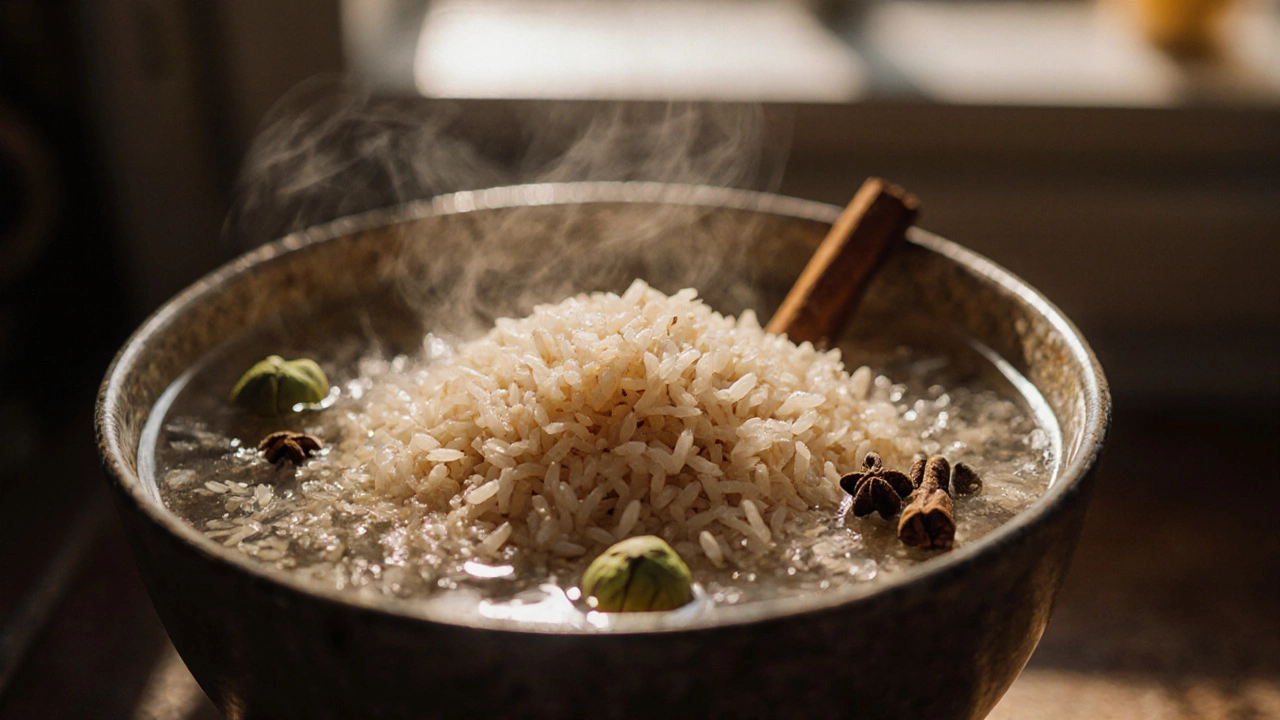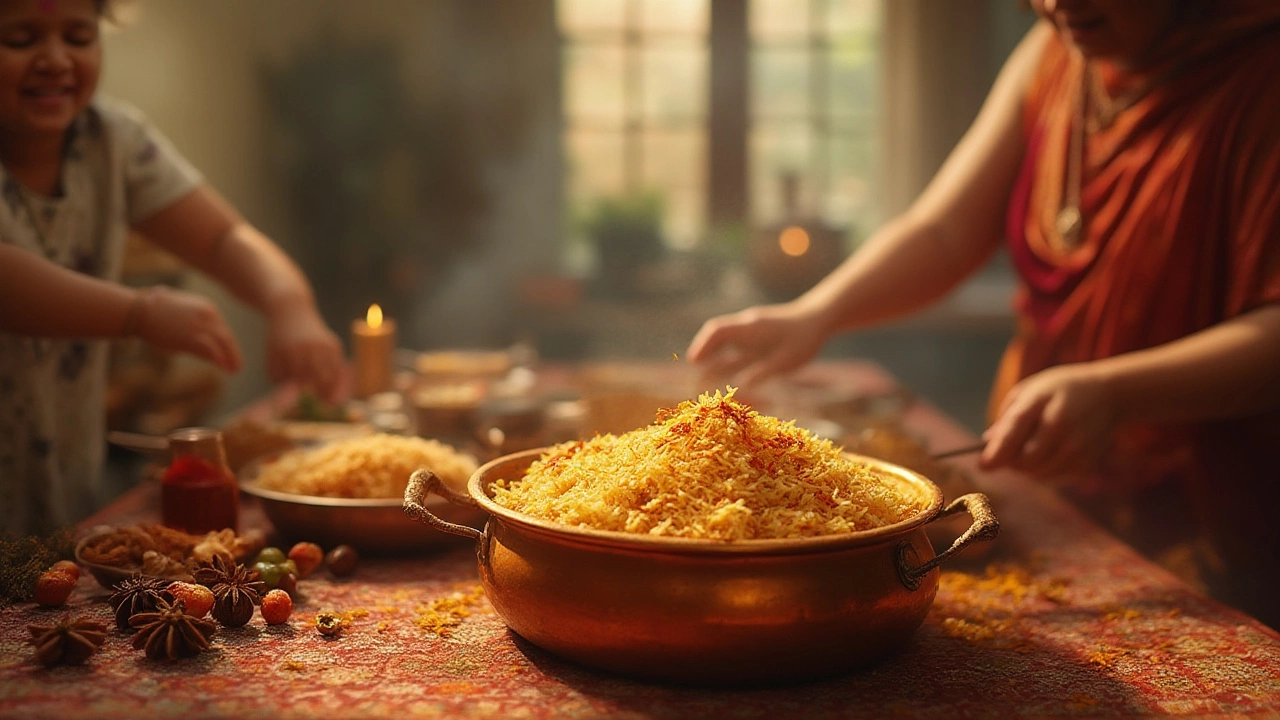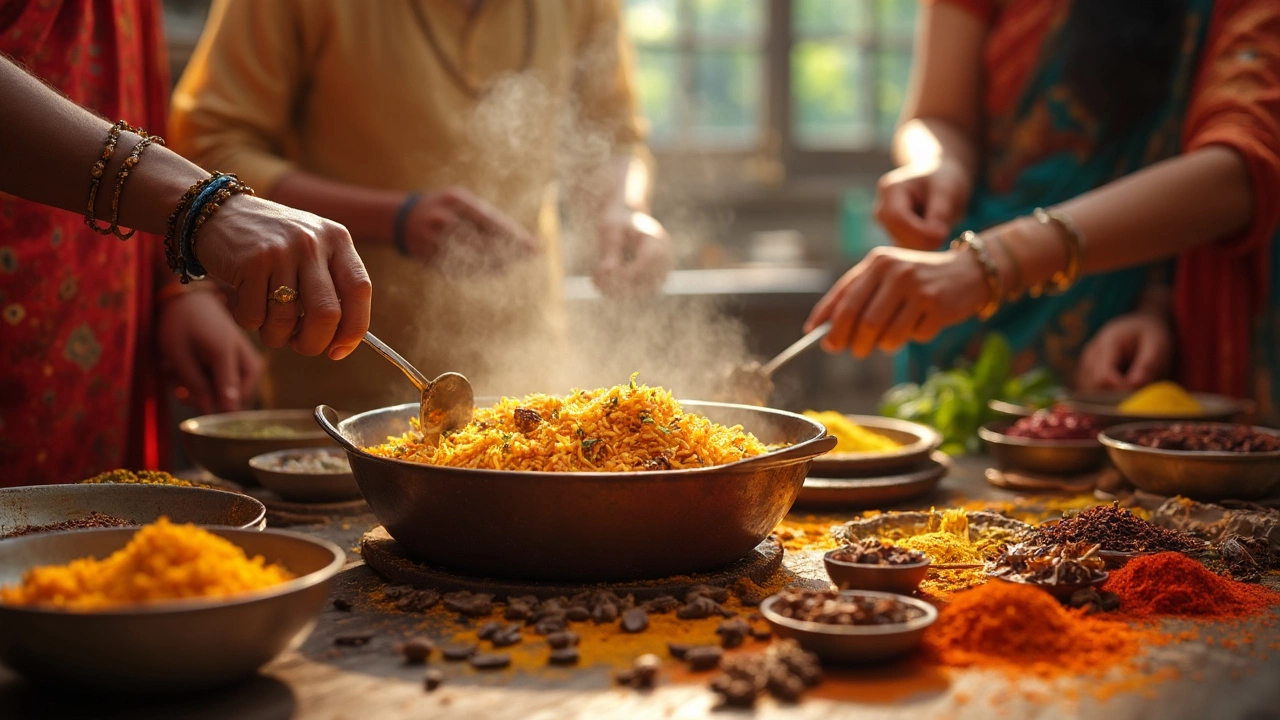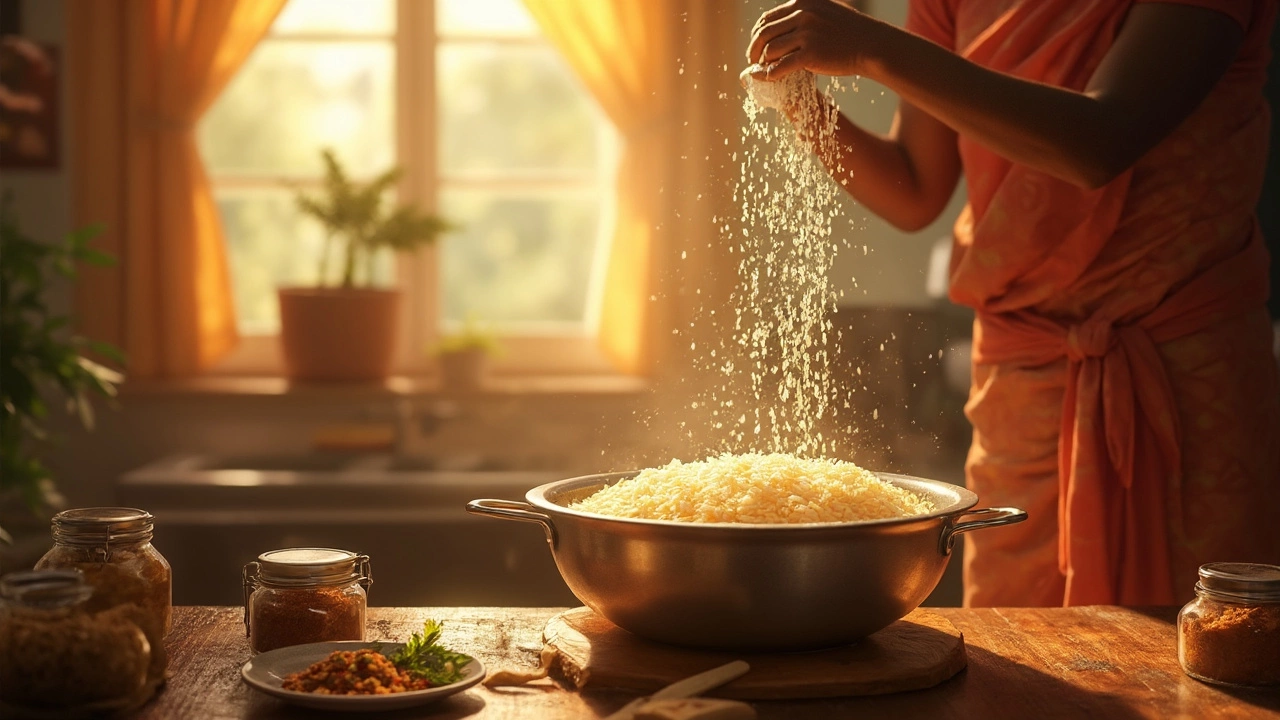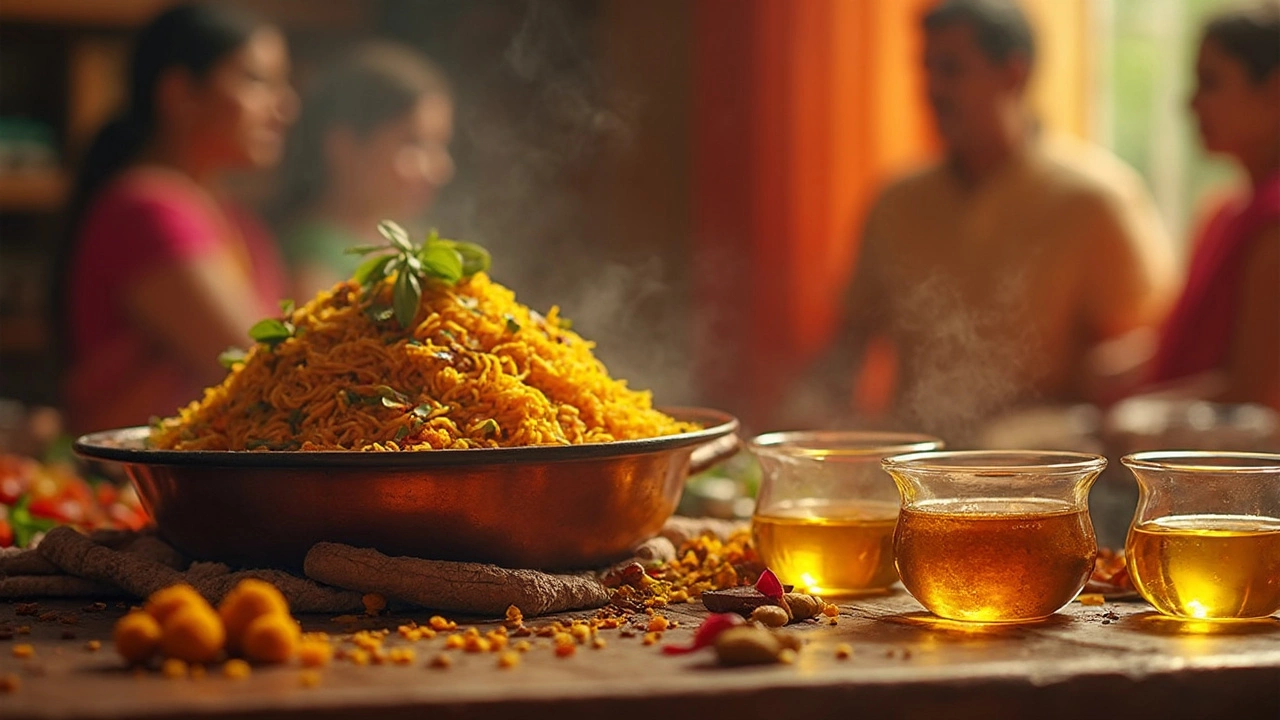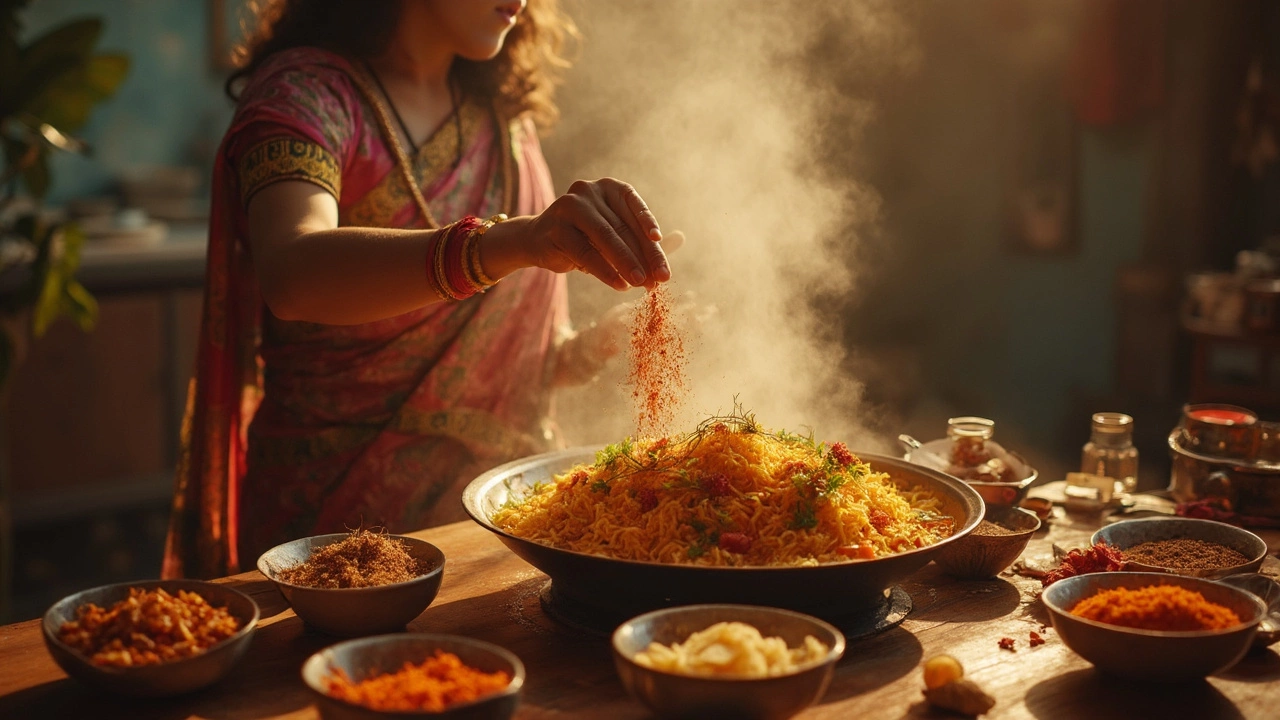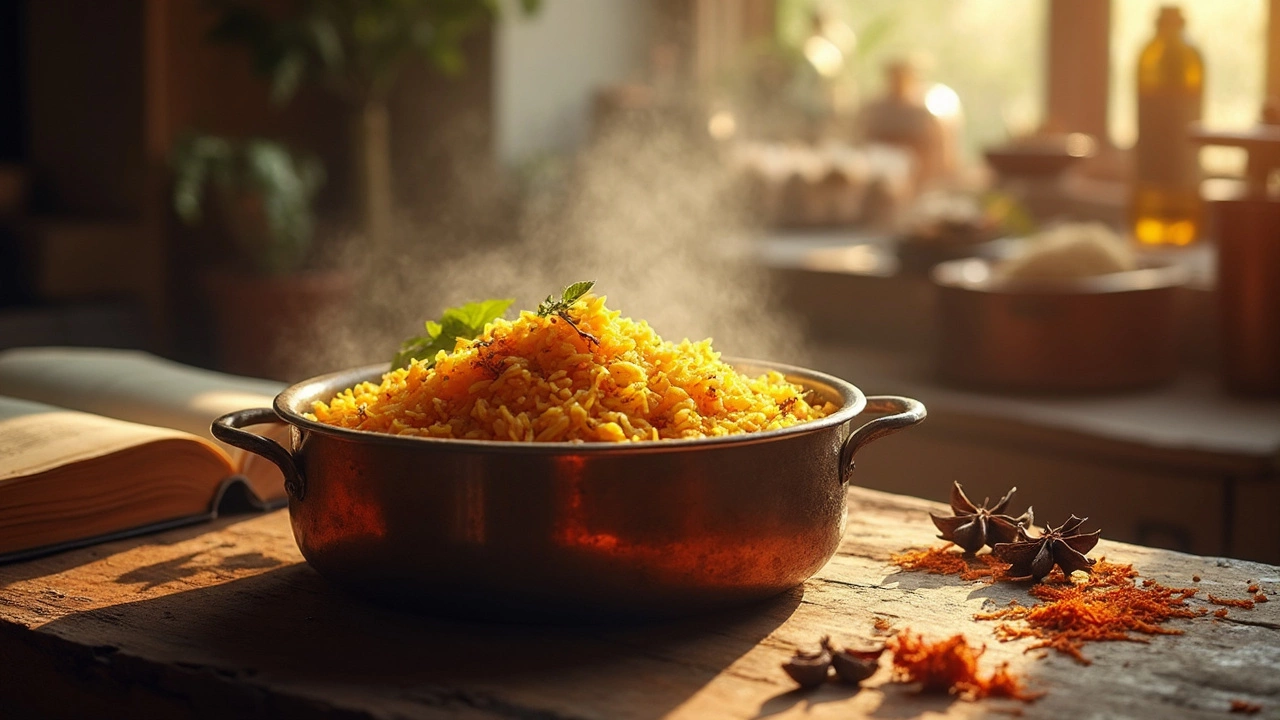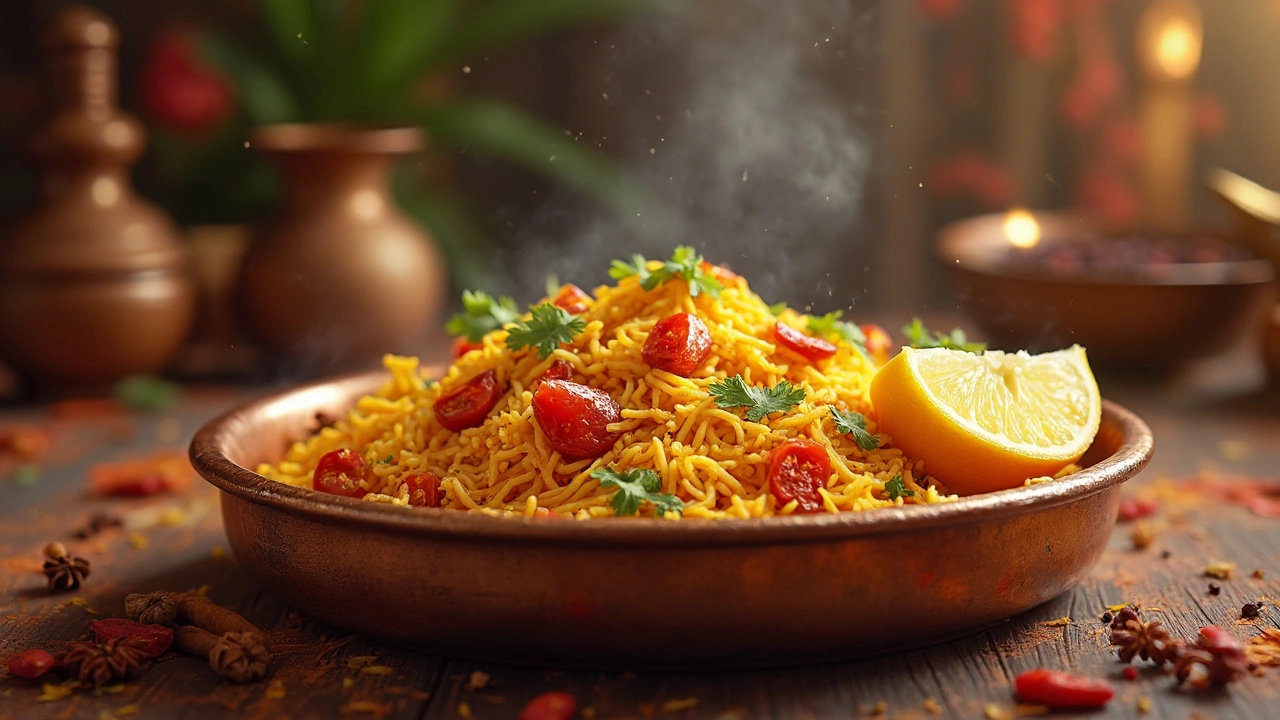Biryani Recipes: Easy Guides, Tips & Secrets
If you’ve ever stared at a pot of rice and wondered why it never tastes like the biryani you love in restaurants, you’re not alone. The good news is that you don’t need a culinary degree to make a tasty biryani at home. Below are the core steps that turn a regular pot of rice into a fragrant, layered feast.
Start with the Rice Right
Quality basmati is the backbone of any biryani. Rinse the grains until the water runs clear, then soak them for at least 30 minutes. Soaking lets the grains absorb water, which stops them from breaking during the final steam. When you’re ready to cook, boil the rice with a pinch of salt and a couple of whole spices—like a cinnamon stick or a few cardamom pods. Cook it to about 70% done; the grains should still have a slight bite. Drain and set aside; this prevents the rice from turning mushy when you layer it later.
Master the Spice Layer
The magic of biryani lives in its spice mix. A basic blend includes ground cumin, coriander, turmeric, red chili powder, and garam masala. For extra aroma, add a teaspoon of fried onions, a few drops of rose water or kewra water, and a squeeze of lemon juice. When you fry the spices in ghee or oil, keep the heat medium‑low so the flavors release without burning. If you’re using meat, marinate it with yogurt, ginger‑garlic paste and half the spice mix for at least an hour. This not only adds flavor but also keeps the meat tender.
Once your meat or veg is cooked through, start layering. In a deep, heavy‑bottomed pot, spread a layer of rice, then a layer of the spiced meat, and repeat. Sprinkle the top rice layer with a handful of fried onions, a few strands of saffron soaked in warm milk, and a dash of ghee. Cover the pot tightly with a lid, seal the edges with dough if you have it, and let the biryani ‘dum’—that means cooking on low heat for about 20‑25 minutes. The steam trapped inside gently finishes the rice and lets the flavors meld.
While the biryani cooks, you can troubleshoot a few common issues. If the rice turns mushy, it’s usually because it was overcooked before layering or the pot wasn’t sealed well enough. If the flavor feels flat, add a pinch more salt or a splash of lemon juice right before serving. And remember, those mysterious black specks you sometimes see? They’re whole spices like cloves, black cardamom or peppercorns—completely normal and full of flavor.
For a quick shortcut, you can use a pressure cooker for the rice. Cook it for one whistle on medium heat, then release pressure and let it sit for five minutes before layering. This saves time without sacrificing texture.
Vegetarian biryani works the same way—just swap the meat for mixed veggies, paneer or tofu. Add a bit more yogurt or a splash of coconut milk to keep the dish moist. The same spice blend and layering technique apply, so you’ll still get that classic biryani aroma.
Finally, serve your biryani with a side of cooling raita, a fresh salad, and perhaps a few hard‑boiled eggs. The contrast of cool and hot, creamy and spicy, makes each bite exciting. With these simple steps, you’ll turn a daunting dish into a repeatable, crowd‑pleasing favorite.
What Gives Good Smell to Biryani? The Secret Ingredients Behind the Aroma
Discover the real ingredients and techniques that give biryani its unforgettable aroma-from soaked Basmati rice to saffron, rose water, and slow dum cooking. No fluff, just proven tricks from traditional kitchens.
Is Biryani Hard to Cook? Simple Tips and Truths for Beginners
Is biryani really hard to cook at home? Discover the truth, the common myths, and get simple tips to make perfect biryani—even if you’re a total beginner.
Why Is Biryani So Hard to Make? Expert Tips for Mastering Authentic Biryani at Home
Uncover why biryani challenges even experienced cooks, from perfecting rice texture to mastering spice layers. Get real tips and facts for authentic results.
Perfect Biryani Recipe: How to Make Authentic Biryani at Home
Discover the real secrets behind what makes a perfect biryani. From rice to layering, spices to technique, learn how you can master biryani at home like never before.
Black Things in Biryani: What Are They and Should You Eat Them?
Ever found a mysterious black pod or ball in your biryani? Those 'black things' aren't a kitchen mistake—they're carefully chosen whole spices bursting with flavor. This article breaks down exactly what you’re fishing out of your rice (think black cardamom, cloves, peppercorns, and more) and whether you should eat or remove them. Get to know the real reasons they’re added and find easy tricks for identifying and dealing with them. You’ll never look at biryani the same way again.
How Long Should I Soak Basmati Rice for Biryani?
Getting that perfect pot of biryani really comes down to how you treat your basmati rice. This article explains exactly how long you should soak basmati rice before using it in biryani, and why this step makes such a big difference. You'll find practical tips, real kitchen advice, and answers to the most common mistakes. Discover how soaking time affects texture and flavor, and learn the little tweaks that help you serve the fluffiest biryani on the block. No complicated science—just clear, everyday cooking wisdom.
Which Oil Is Best for Biryani? Find Out What Really Works
Ever wondered which oil is actually best for biryani? This guide compares popular options like ghee, sunflower oil, and mustard oil, weighing their flavor, smoke points, and health factors. Learn how oil choices impact your biryani’s aroma, texture, and taste. Find tips to match the oil to your cooking style and dietary needs. Pick the perfect oil and make every biryani memorable.
Secret Ingredient for Biryani: What Really Makes It Special?
Wondering what gives biryani that unforgettable flavor? This article gets straight into the heart of the dish, breaking down what actually counts as the 'secret ingredient.' You'll get facts, tips, and practical advice, whether you're a home cook or ordering from your favorite spot. Discover what matters most, what to experiment with, and how to take your biryani beyond basic. Get the real scoop on making biryani stand out.
Biryani Without Meat: What Is It Called and How Do You Make It?
Curious about biryani without meat? This article digs right into what it's called, the history behind veggie versions, and tips on making a killer pot yourself. Get to know the key ingredients, popular regional names, and little-known facts about meatless biryani. There’s even advice for nailing the flavors without using chicken, mutton, or seafood. Whether you’re a longtime vegetarian or just running out of chicken, this read sorts out your biryani doubts fast.
Biryani Secret Ingredients: What Really Makes It Stand Out?
Ever wondered why biryani at home never tastes quite like the one from your favorite restaurant? The magic lies in a handful of secret ingredients and age-old tricks that most recipes don’t share up front. This article unpacks those hidden hero ingredients, along with tips on how to use them for perfect biryani every time. Say goodbye to bland rice and hello to flavor-packed bites. You’ll get authentic advice, practical tips, and insights that will up your biryani game instantly.
What Essence is Used in Biryani: Unlocking the Fragrant Secret
Biryani, a beloved dish celebrated for its vibrant flavors and aromas, owes much of its appeal to the use of special essences. These include rose water and kewra water, which lend a unique fragrance and depth to the dish. Understanding these ingredients and how they enhance biryani can elevate your cooking game. Explore practical tips and insights to perfect your own biryani masterpiece.
Why Do We Add Lemon in Biryani?
Adding lemon to biryani isn't just about a tangy kick; it's a game-changer in more ways than one. Lemons can enhance the flavors and aromas of spices, make the meat tender, and bring a delightful balance to the dish. This article breaks down these benefits and shares tips on how to perfectly incorporate lemon into your biryani. Whether you're a biryani newbie or a seasoned cook, understanding the role of lemon can uplift your culinary game.
